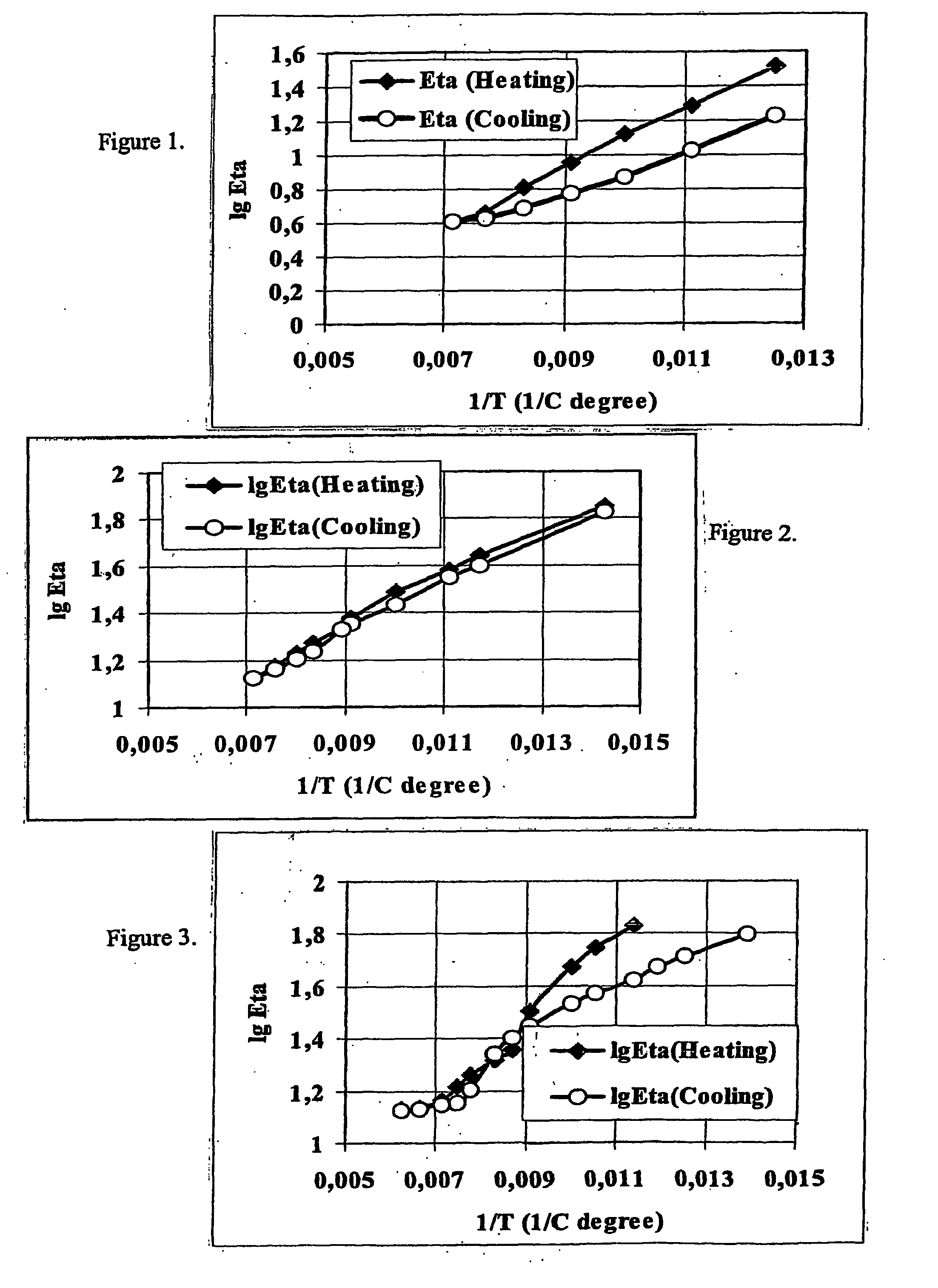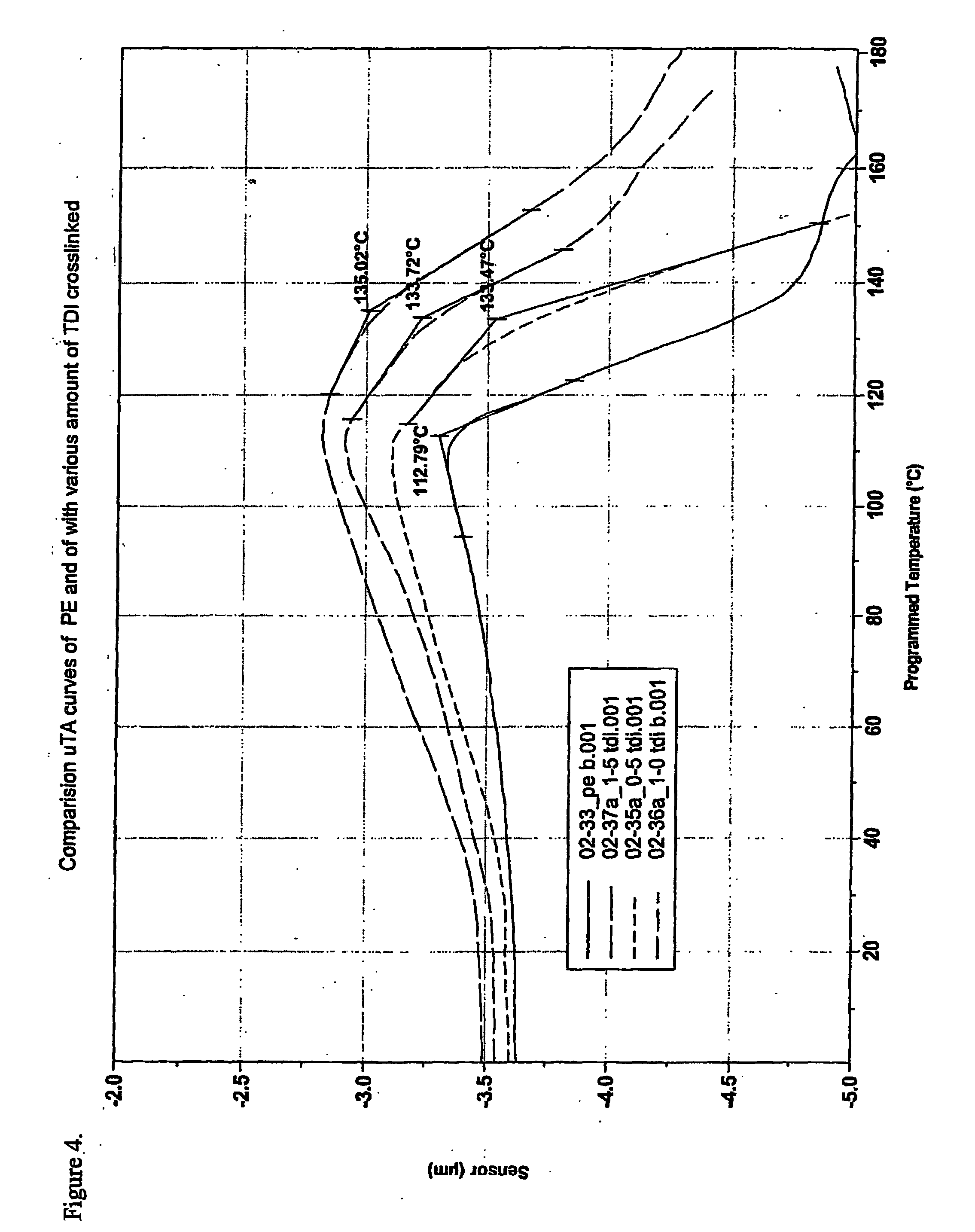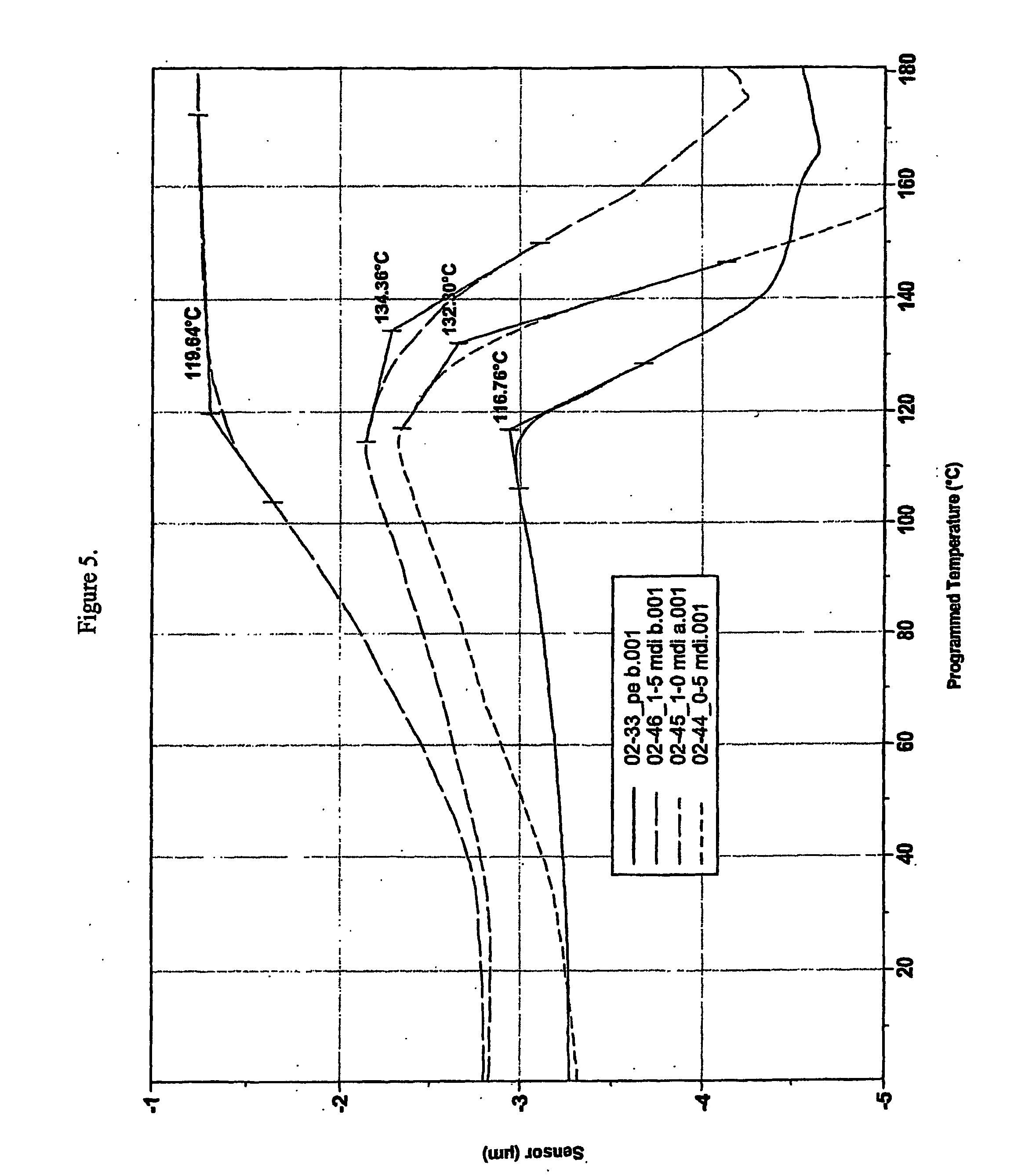Recyclable crosslinked polymers with saturated main chain and thermally reversible urethane crosslink points
a crosslinked polymer and main chain technology, applied in the field of saturated backbone polymers, can solve the problems of limited use of glassy polymers, limited recycling possibilities of products made of such materials, and inability to fully crystalline sa
- Summary
- Abstract
- Description
- Claims
- Application Information
AI Technical Summary
Benefits of technology
Problems solved by technology
Method used
Image
Examples
example 1
Selection of Polyurethane Catalysts and the Proof of Reversible Reaction
[0080] For the selection of urethane catalysts and to prove the reversibility of the urethane reaction solution conditions were used, which can be investigated and screened easier than melt-reactions. As a solvent Diphyl (a commercially available heat-transfer medium, a mixture of diphenyl oxide and diphenyl) was used (melting point 12.2° C., boiling point 265° C.), as it has low volatility, dissolves the components and allows reaction kinetic studies in a wide temperature range. For the reaction-kinetic studies TDI (toluylene-diisocyanate) was selected as iocyanate component and thymol as a phenolic component (see Table 1.).
TABLE 1Properties of the isocyanate and phenol components usedin selecting the urethane catalysts.WeightMp.Bp.loss (TG)CompoundFormulaMw.(° C.)(° C.).° C.%Toluylene-diisocyanateC6H4(NCO)216012-14251800(TDI)1255Aldrich (USA)1481017320Thymol (THYM) (Reanal(CH3)(C3H7)C6H3OH150512321150Fine ...
example 2
Optimization of Grafting / Crosslinking Conditions in a Paraffin Model System. Crosslinking by Grafted Aliphatic Alcohol and Polyphenol-Diisocyanate Preopolymer
[0086] Preliminary optimization of crosslinking / grafting conditions was performed in a model system, wherein the polyethylene matrix was replaced by a liquid paraffin (hereinafter abbreviated as PARF, mixture of saturated hydrocarbons, carbon number n<15, Boiling point <350° C.). This low molecular matrix made possible an easy screening of the crosslinking efficiency (liquid / gel) in a dilute non-polar medium.
[0087] In this experiment cross-linkage was built up by grafting an unsaturated compound, containing an aliphatic alcohol function (hydroxyethyl methacrylate, HEMA), on the saturated paraffin backbone according to the following reaction
CnH2n+2+CH2═C(CH3)—COO—CH2—CH2—OH+Perox→PARF-OH
and by reacting the grafted alcohol with an aromatic polyol—aromatic diisocyanate prepolymer, which can be regarded as a phenol blocked po...
examples 3-5
LDPE Based Compounds with Thermally Reversible Urethane Crosslinks. Crosslinking by Grafted Aliphatic Alcohol and Polyphenol-TDI Prepolymer
[0093] Compounds according to the invention were prepared by a two-step grafting / crosslinking procedure. The materials used are described in Table 7, the compositions are listed in Table 8.
TABLE 7Materials used for preparing examples 3-5.Role ofComponentcomponentCharacteristicsTipolen FB 243-51MatrixLDPE(TVK Rt., Hungary)Mp. 111° C.Density. 0.924 g / cm3MFI:: 0.8 (190° C. / 2.16 kg)(g / 10 min)Luperox F90P (Perox TB:RadicalSee Table 5.1,3-1,4-bis(tert-initiatorbutylperoxyisopropyl)-Derivative ofbenzene on silica powder)terc. Butyl(ATOFINA, France)peroxide2-Hydroxyethyl-AliphaticSee Table 5.methacrylate (HEMA),alcohol withAldrichunsaturationPhloroglucinolAromaticSee Table 5.(PHL)polyolToluylene-2,4-diisocyanateAromaticSee Table 1.(TDI)diisocyanate(Aldrich)CHIMASORB 944 (ChS944)UrethaneSee Table 2.(CIBA-GEIGY)formationcatalystZinc-stearateUrethaneSee...
PUM
| Property | Measurement | Unit |
|---|---|---|
| melting point | aaaaa | aaaaa |
| temperature | aaaaa | aaaaa |
| volume | aaaaa | aaaaa |
Abstract
Description
Claims
Application Information
 Login to View More
Login to View More - R&D
- Intellectual Property
- Life Sciences
- Materials
- Tech Scout
- Unparalleled Data Quality
- Higher Quality Content
- 60% Fewer Hallucinations
Browse by: Latest US Patents, China's latest patents, Technical Efficacy Thesaurus, Application Domain, Technology Topic, Popular Technical Reports.
© 2025 PatSnap. All rights reserved.Legal|Privacy policy|Modern Slavery Act Transparency Statement|Sitemap|About US| Contact US: help@patsnap.com



